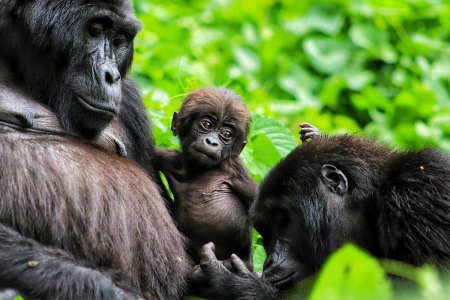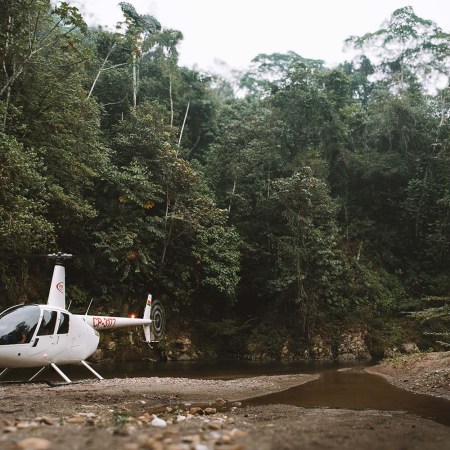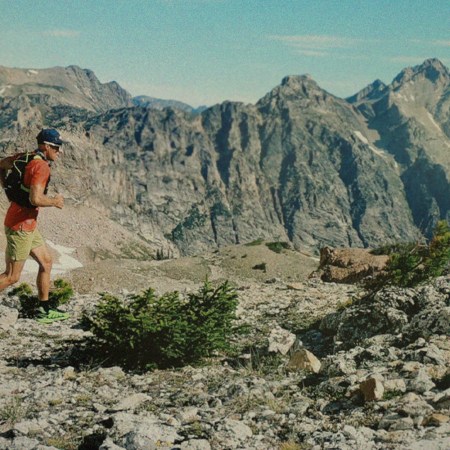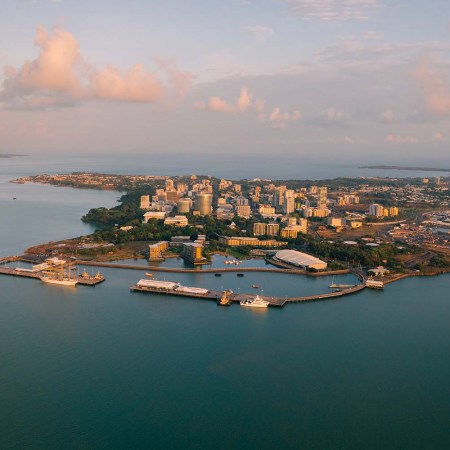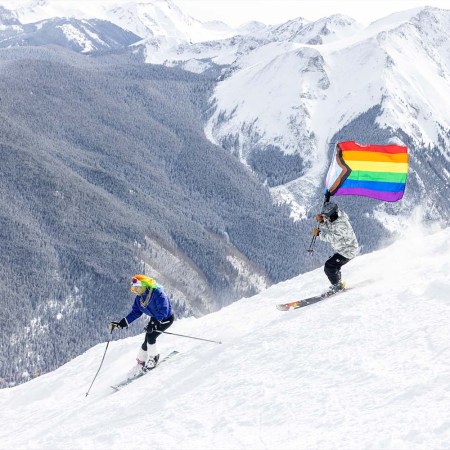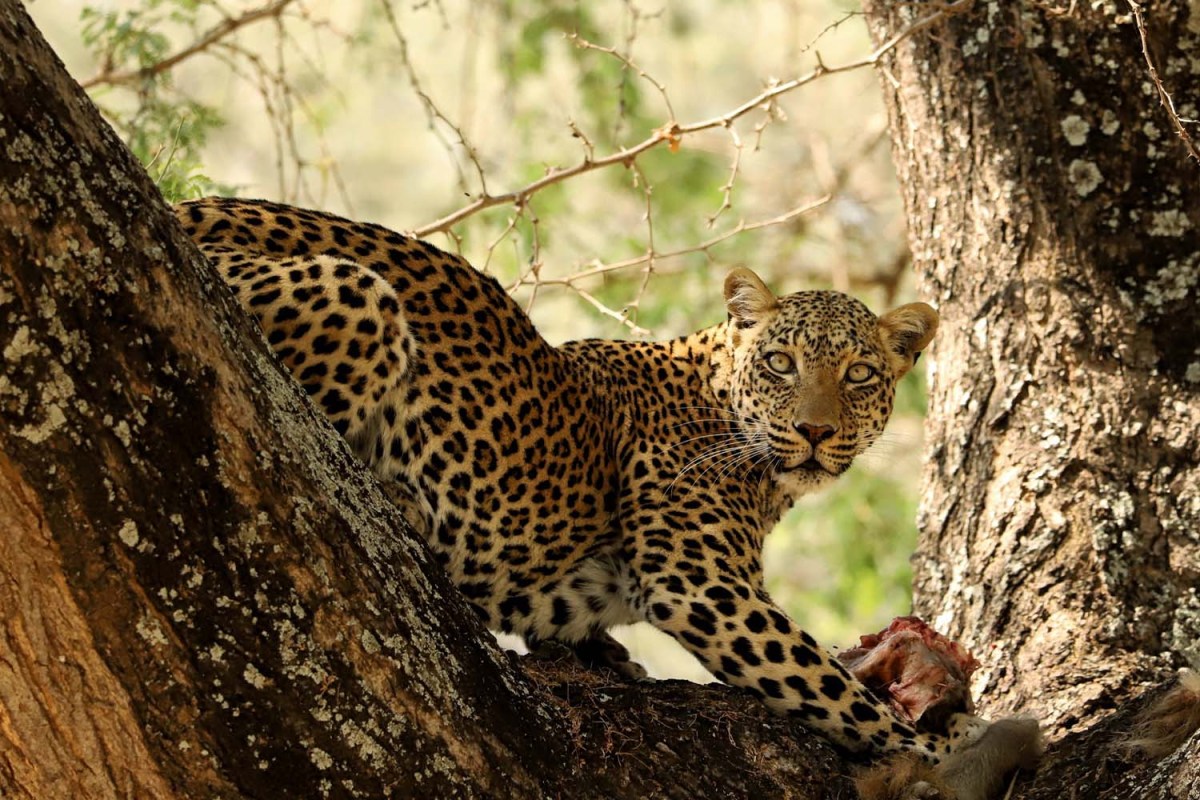
There are many ways to construct an African safari. Not that you need a theme — simply deciding to decamp to the Masai Mara in Kenya or maybe South Africa’s Kruger National Park is ample enough reason to take a safari. You go on safari because you can. No grand excuse is necessary.
Nature plans better than we could, anyway. In certain instances, it’s timing that’s the key, taking a safari to coincide with the Great Migration in the Serengeti, for instance. In others, geology could dictate the path for you because there’s no need to follow an imaginary line on a map when our planet has already taken the lead.
The Zambezi River crosses into or serves as a sliver of border for Angola, Botswana and Namibia. But it begins its journey in Zambia, the country for which it’s most associated, and serves as the demarcation line between Zambia and Zimbabwe before flowing through Mozambique and into the sea beyond. Handing the reins to nature, what if you followed its course and combined a river-centric safari in Zambia with a stop at Victoria Falls — the Zambezi’s most notable feature is one of the Seven Natural Wonders in the World — and concluded with Mozambique’s beautiful coastline, where the Mighty Zambezi meets its match and empties itself into the Indian Ocean? Let’s find out.
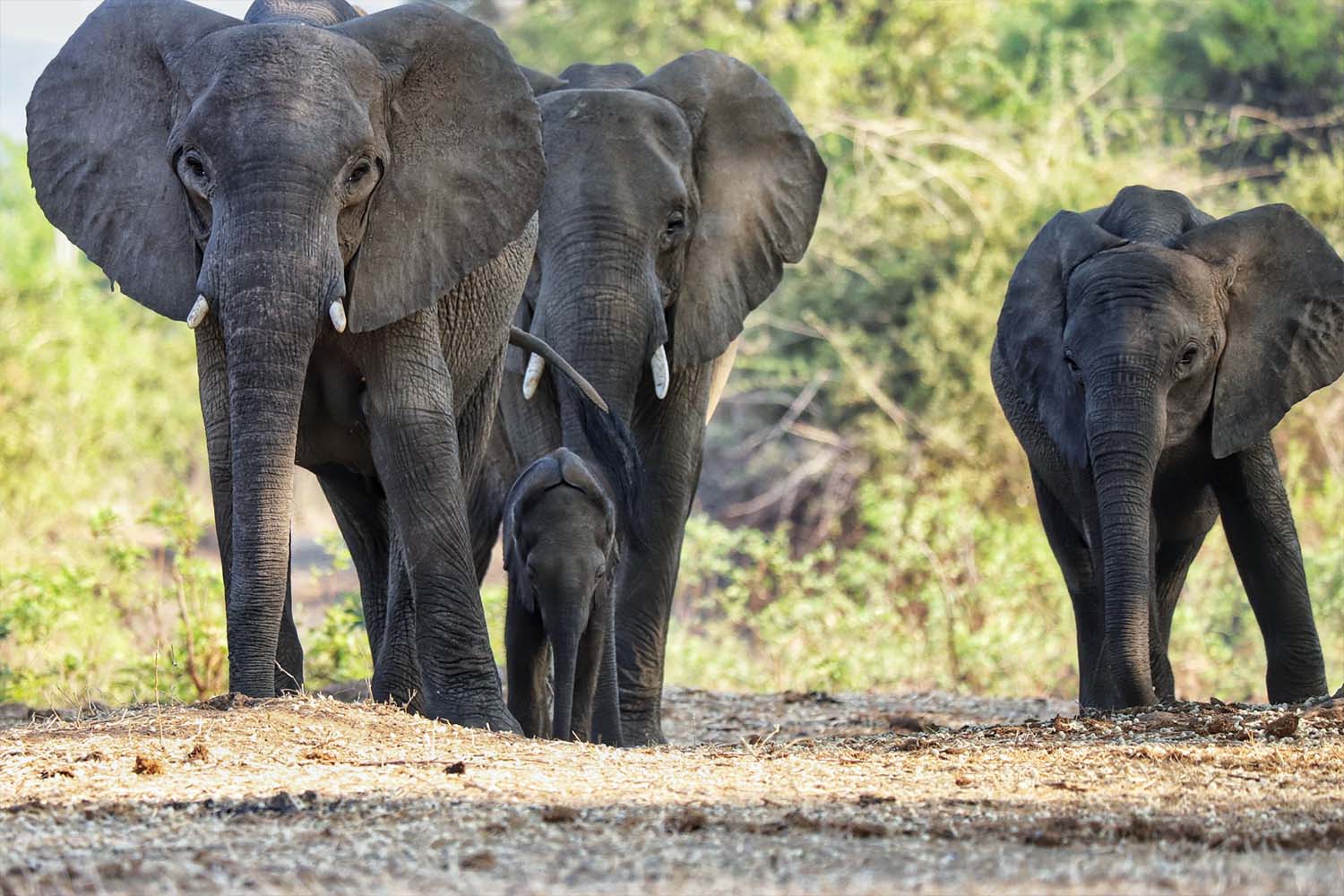
Safari Along the Zambezi
This itinerary was put together by The Luxury Safari Company, founded by Rose Hipwood in 2010. She specializes in bespoke, high-end safaris, and it was Hipwood’s idea to head to Lower Zambezi National Park for a glimpse of what makes the ecosystem so spectacular. From there, I knew I didn’t want to miss out on Victoria Falls and that I wanted to pair the safari with a coastal excursion. She made the whole thing happen in style while ensuring every logistical challenge was handled with ease.
After flying to South Africa, connecting from Johannesburg to Lusaka, Zambia, and hopping on a bush flight, my first stop was the newly renovated Chiawa Camp in Lower Zambezi National Park. The camp is nestled alongside the riverbank in a prime swath of real estate for wildlife viewing, and as if on cue as we arrive via speed boat, four elephants make a slow, graceful crossing across the river to a small, low-lying island where they enjoy whiling away the hot afternoons.
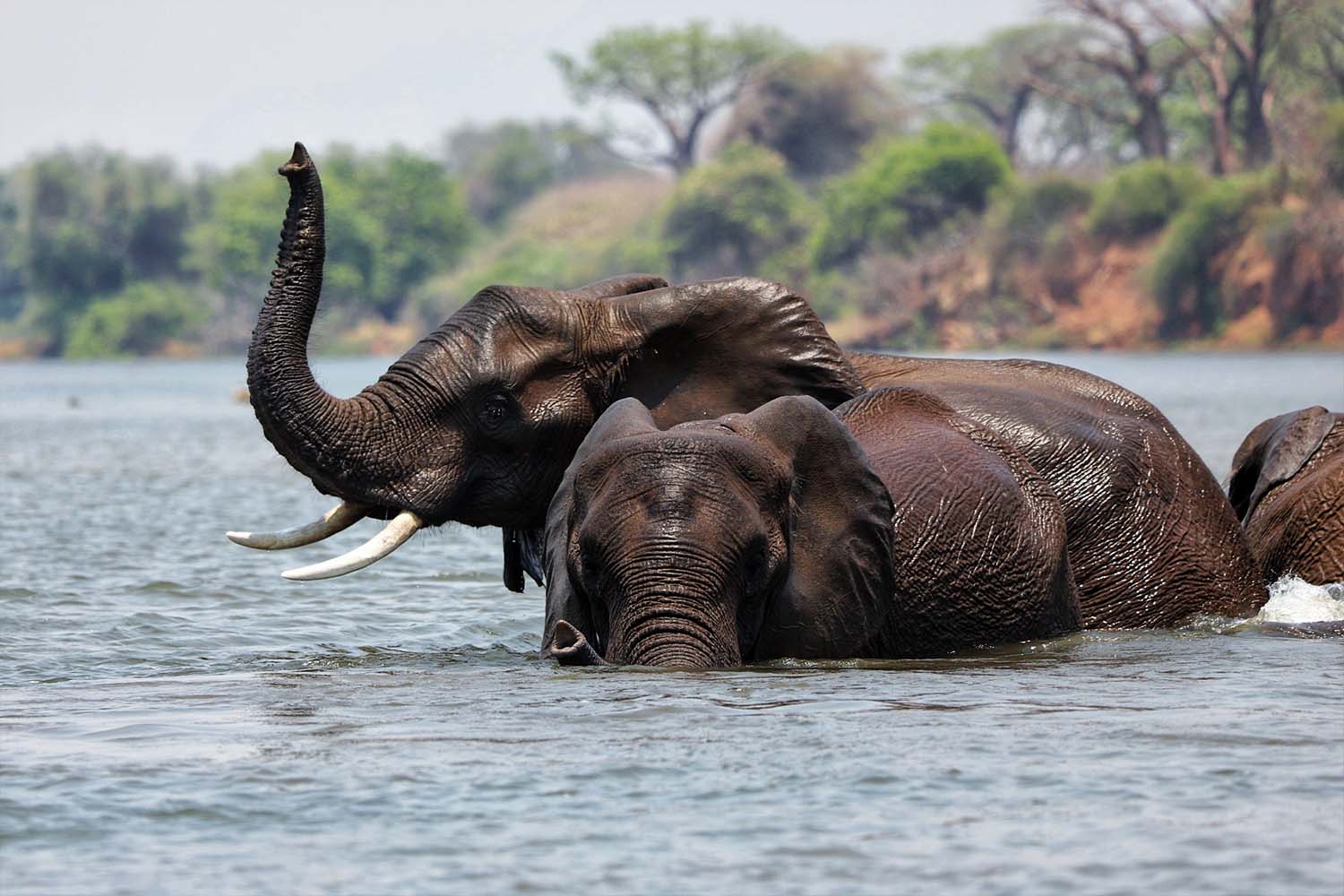
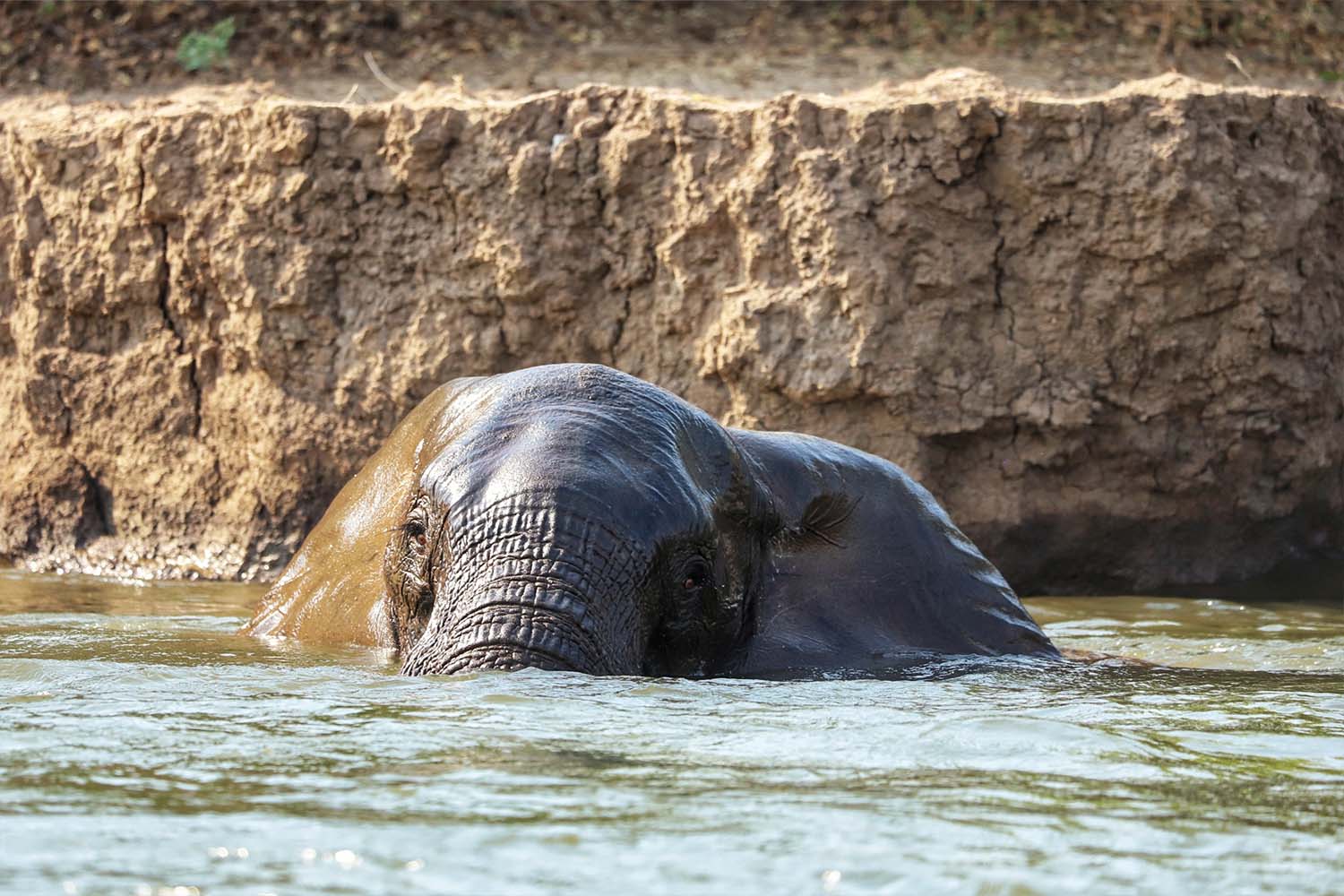
The river is omnipresent in Lower Zambezi National Park, not only its physical being but in the way that it has dictated and shaped its surroundings while providing for the wildlife who call it home. Even in dry season, with a sweltering heat wave sending temperatures soaring well past 110 degrees, the river is large and full of life.
It’s easy to see why founder Grant Cumings handpicked this locale to serve as Chiawa’s home back in 1988. “We were the first camp in this entire national park — there were no roads, no protection,” he says. That doesn’t mean things were quiet, though. “The poaching was insane,” he adds. “We’d find dozens of elephants poached every year.”
Guides with experience dating back to those early days still speak with sadness about the state of the wildlife in the park at that time, hearing gunshots in the night and watching the animals that weren’t killed flee en masse. The presence of Cumings and his team, followed by the deployment of a well-trained, armed park ranger service funded in large part via tourism, was able to turn the tide.
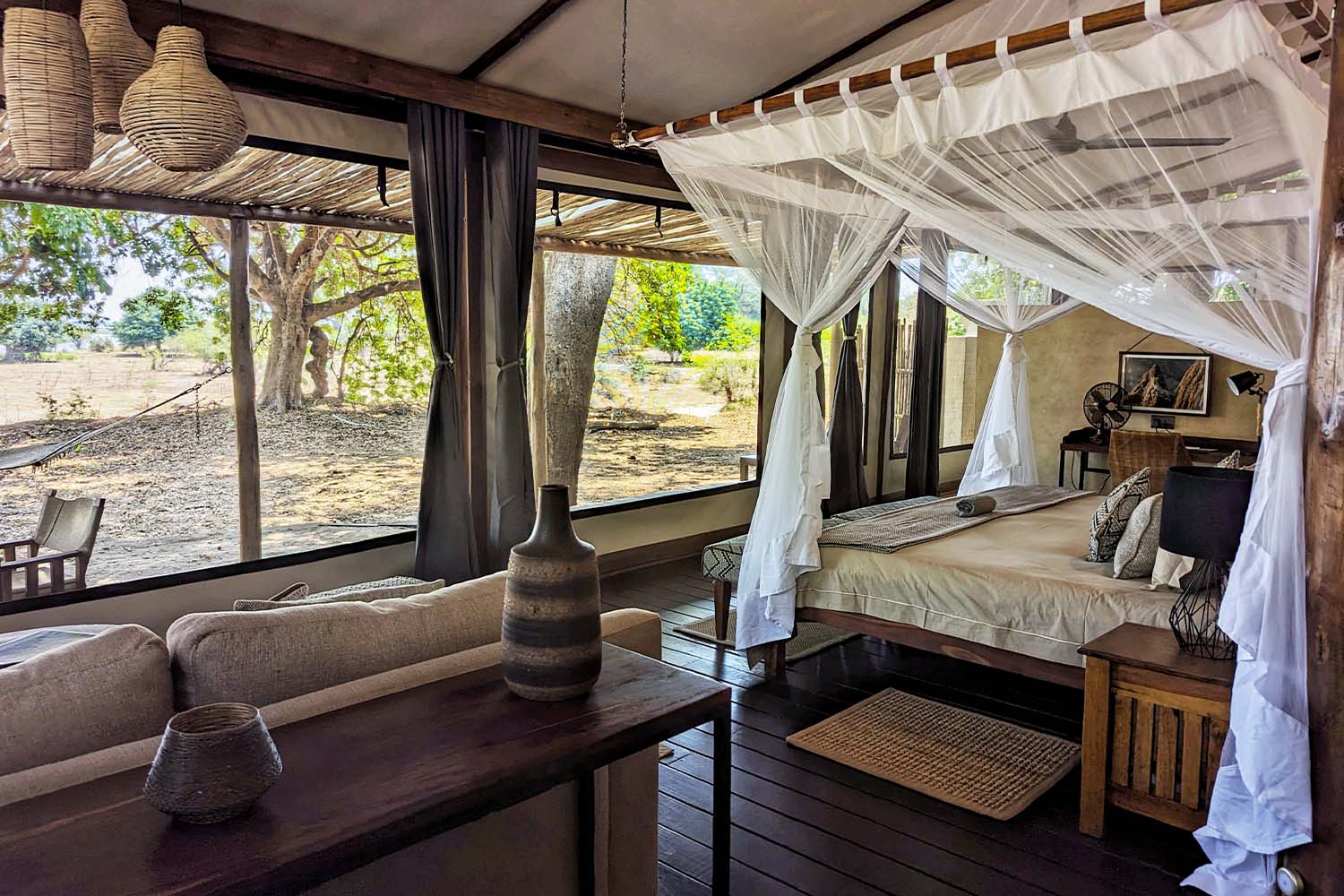
Little did I know that Chiawa’s aforementioned renovation was chronicled with a reality television show, an idea that seems about as far removed from the camp’s rough and tumble origin as you could imagine. But the impact of the overhaul was clear — its nine tents were enlarged and upgraded, and a new solar energy system was installed to provide the camp’s full electrical supply. Also clear is that Cumings would make for excellent TV fodder. He’s a walking anecdote after a life spent in the bush, prone to telling visitors things like how their planned canoe ride will take them down the “channel of death” and that a few people “get wet” and fall off their canoes into the water each year.
I recall the line later that afternoon as an enormous crocodile slides into the water 10 or 20 feet ahead of my canoe. While you know hippos and crocs are all over the place, it’s a different feeling to see one disappear from sight and remain lurking nearby, you fully aware of its presence.
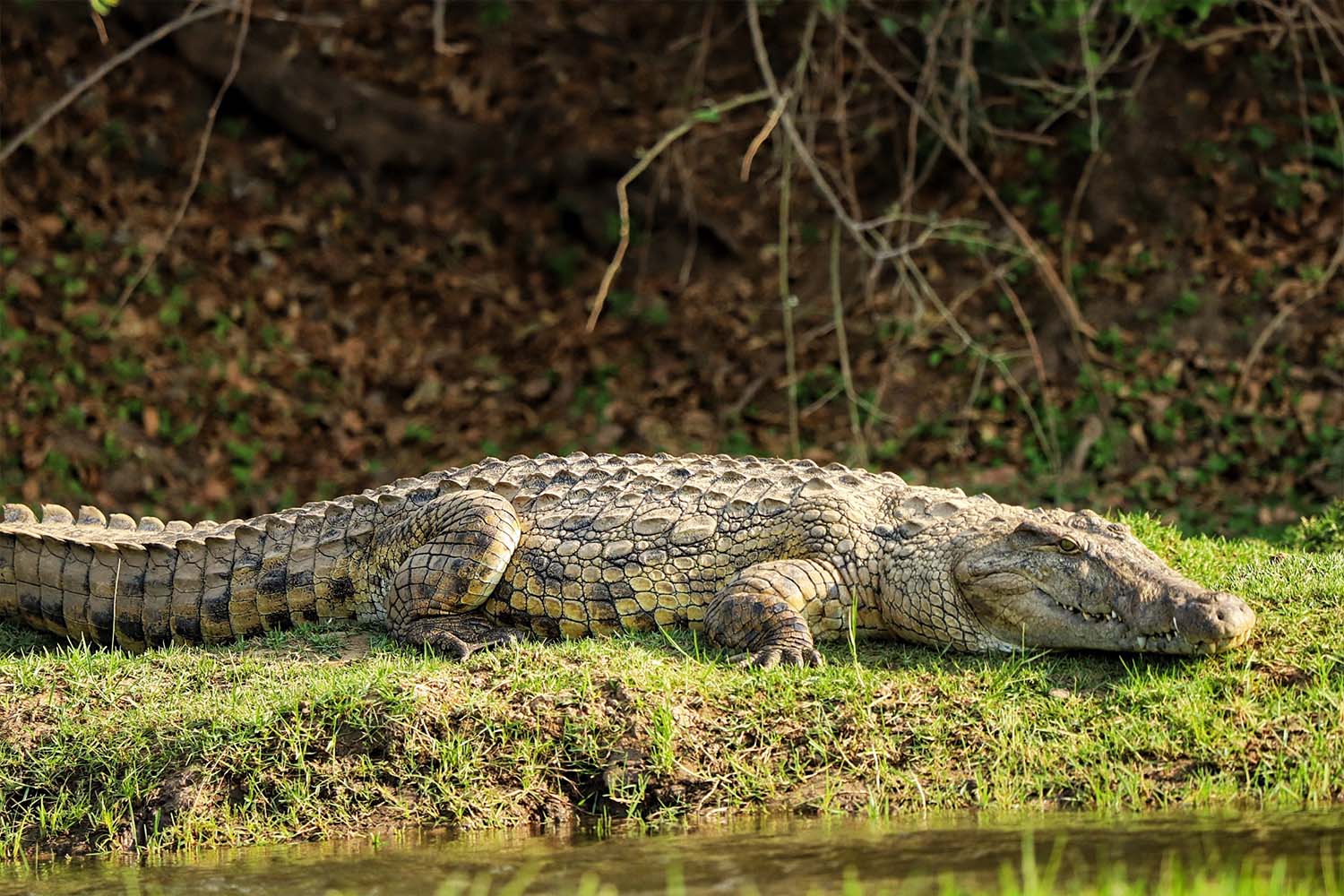
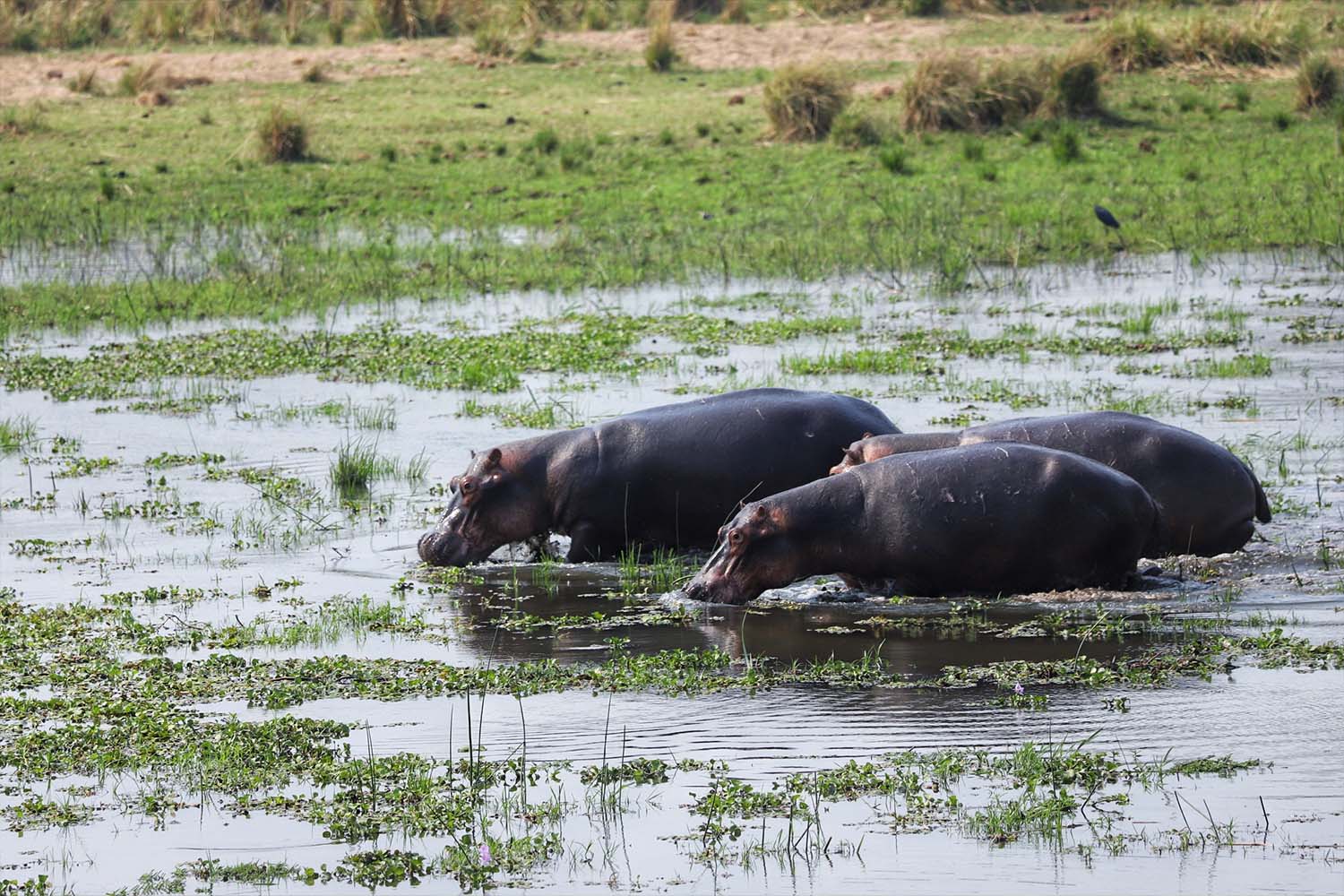
That only heightened the senses though for the viewing that was about to unfold. A herd of about 18 or 20 elephants head to the channel, including wizened matriarchs, a few adorable, awkward youth, and one with a snub-nosed trunk who had to dunk its head under the water to have a drink — possibly the handy work of that now unseen crocodile. They drink and splash and then decide they’ve had enough and cross the channel. Being in such close proximity in the canoe, hovering right above the water without the protection or escapability of a large vessel, provides an eye-opening perspective and appreciation for the majestic creatures and the place they call home.
Beyond game drives and perhaps perilous canoe rides, Chiawa offers boat cruises, catch and release fishing outings, pontoon boat lunches on the water and walking safaris. The latter is another chance to gain a different vantage and understanding of the Lower Zambezi and its wildlife.
After establishing Chiawa, Cumings has since expanded to operate three safari camps, with a fourth on the way this year. Down the river from Chiawa is its sister camp Old Mondoro; while it’s a short ride away and rests on the same riverbank, it’s an entirely different setting. Old Mondoro feels less like an enclosed camp within a national park than a scattering of small constructions within the wilderness.
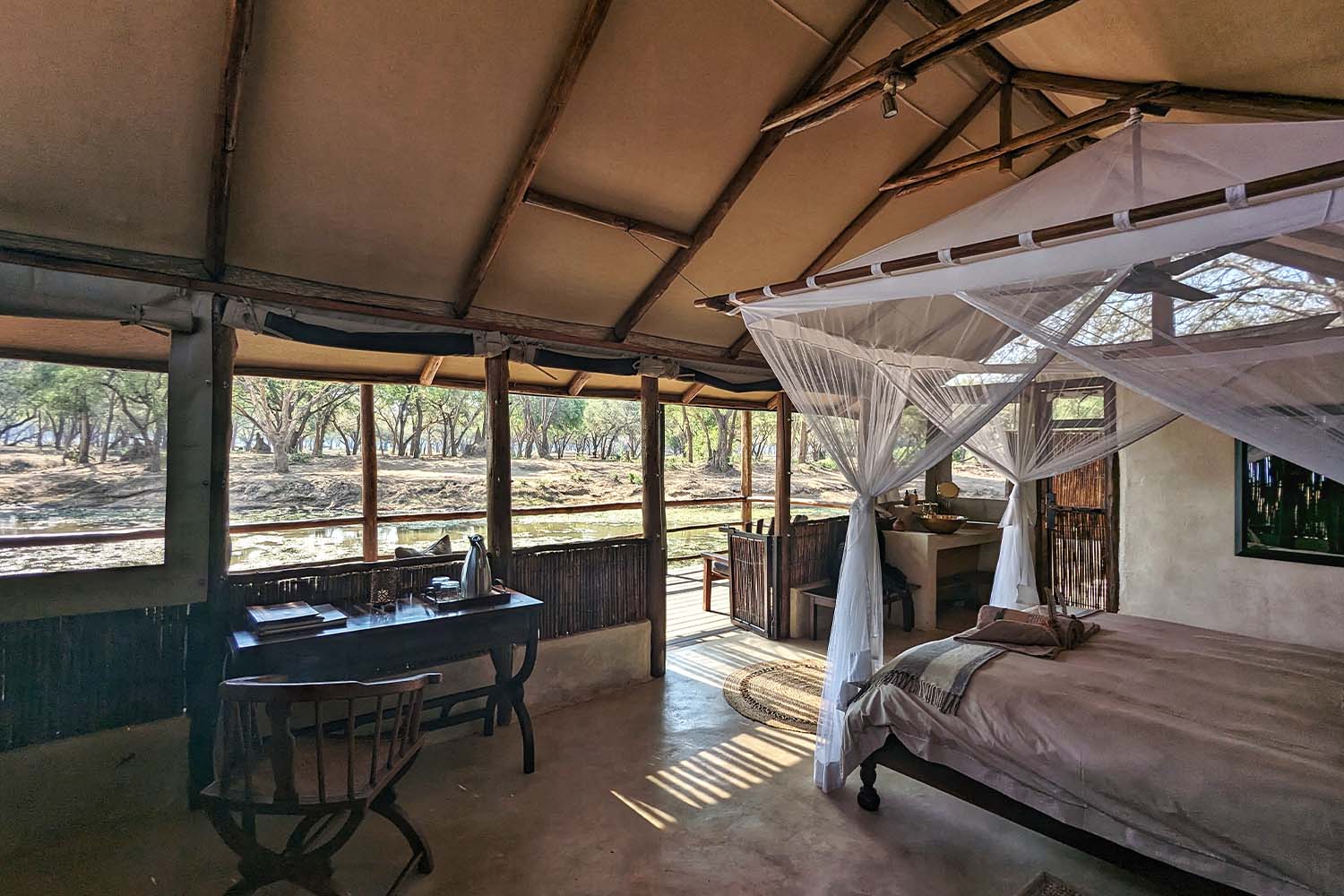
When elephants or buffalo pass in front of your tent, it’s clear they’re not coming onto your turf; you’re visiting them on theirs. There are no fences or manicured paths, this is a bush camp that’s very much in and of the place. It’s pure, wild Lower Zambezi. A leopard may take a casual moonlit stroll 100 feet from your dining table, or you may be unable to leave your tent for a stretch if the resident buffalos have taken up outside your front door.
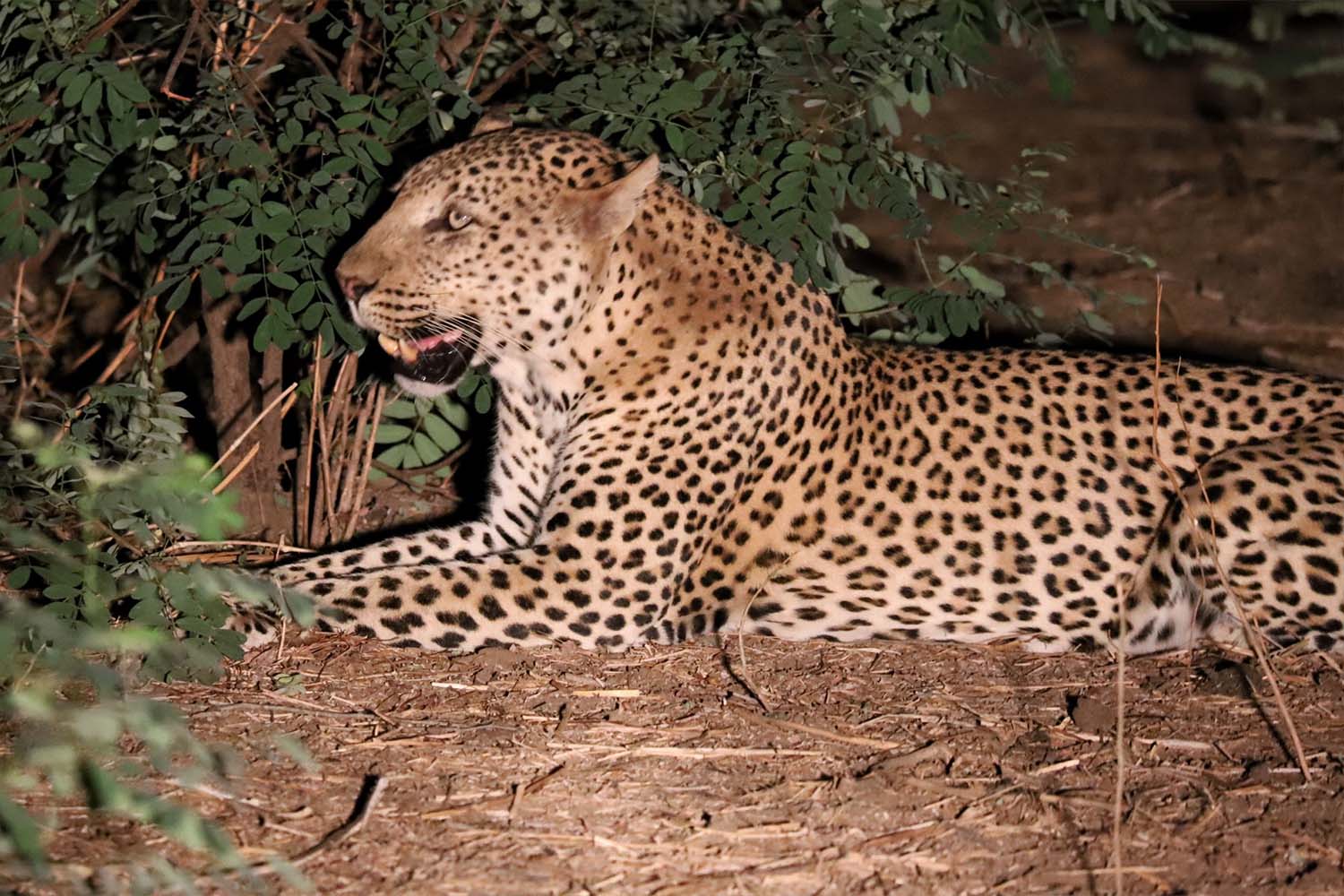
Back at Chiawa, I went on an afternoon game drive with Sam Simunji, a seasoned guide who called his safari vehicle the Lucky Limo. The name proved apt, as the drive played out in the way of many game drives, a long lull with nothing happening before an unforgettable moment erupts, seemingly conjured out of thin air. But in this case, Sam predicted it and even made a maneuver to ensure it took place.
He found a group of four lions dubbed the Ginger Boys, so named for the mane of the eldest member. One or two of the adult males in the group, which was splintered off from a larger pride, are his children. The lions were lazing about in the oppressive heat when a male elephant approached the area. He lurked a good distance away but was eyeing the lions the whole time. Sam, eyeing the elephant in turn, backed our vehicle away, explaining that he felt the elephant may approach or confront the lions, and that we would be in their path should they need to flee the scene.
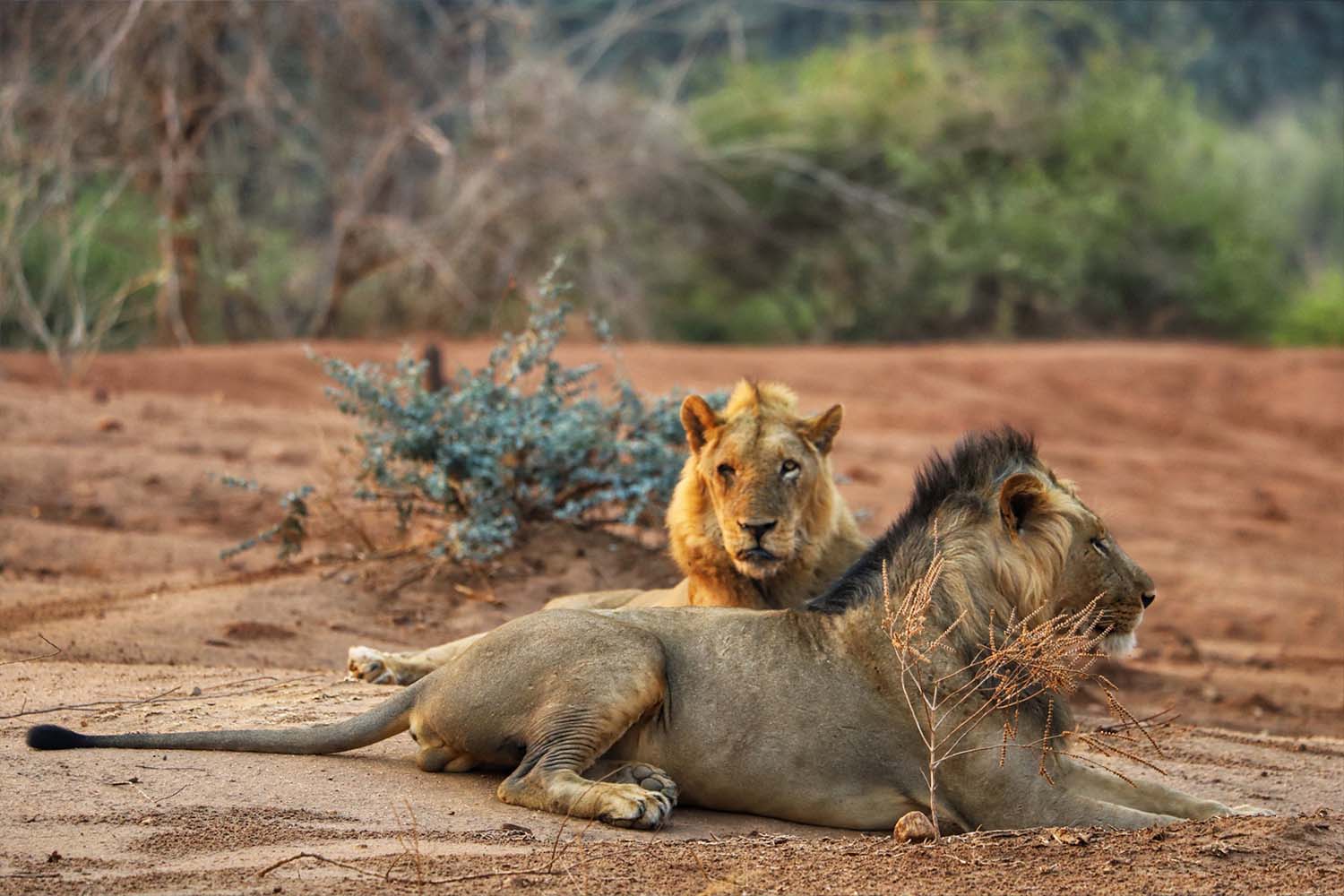
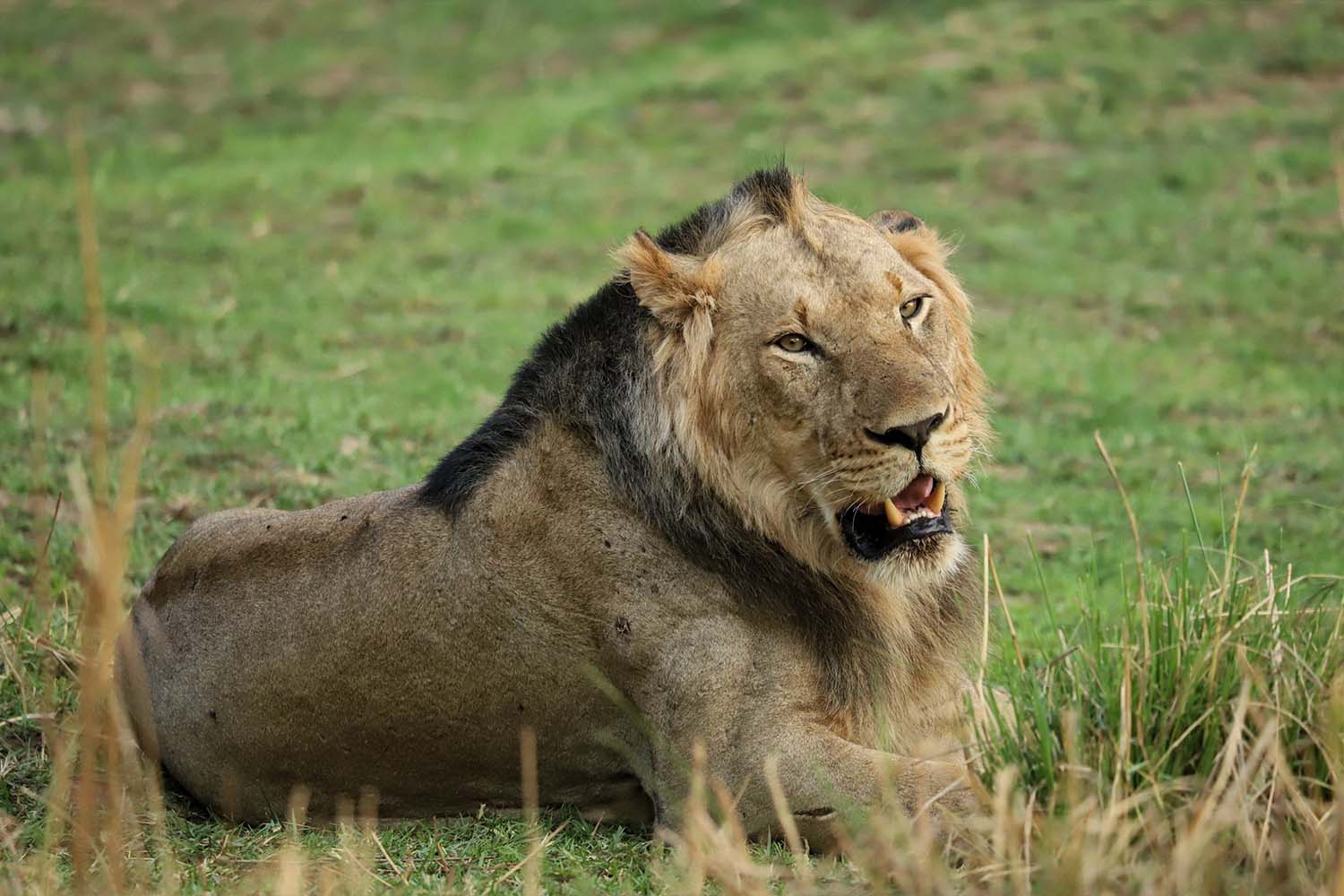
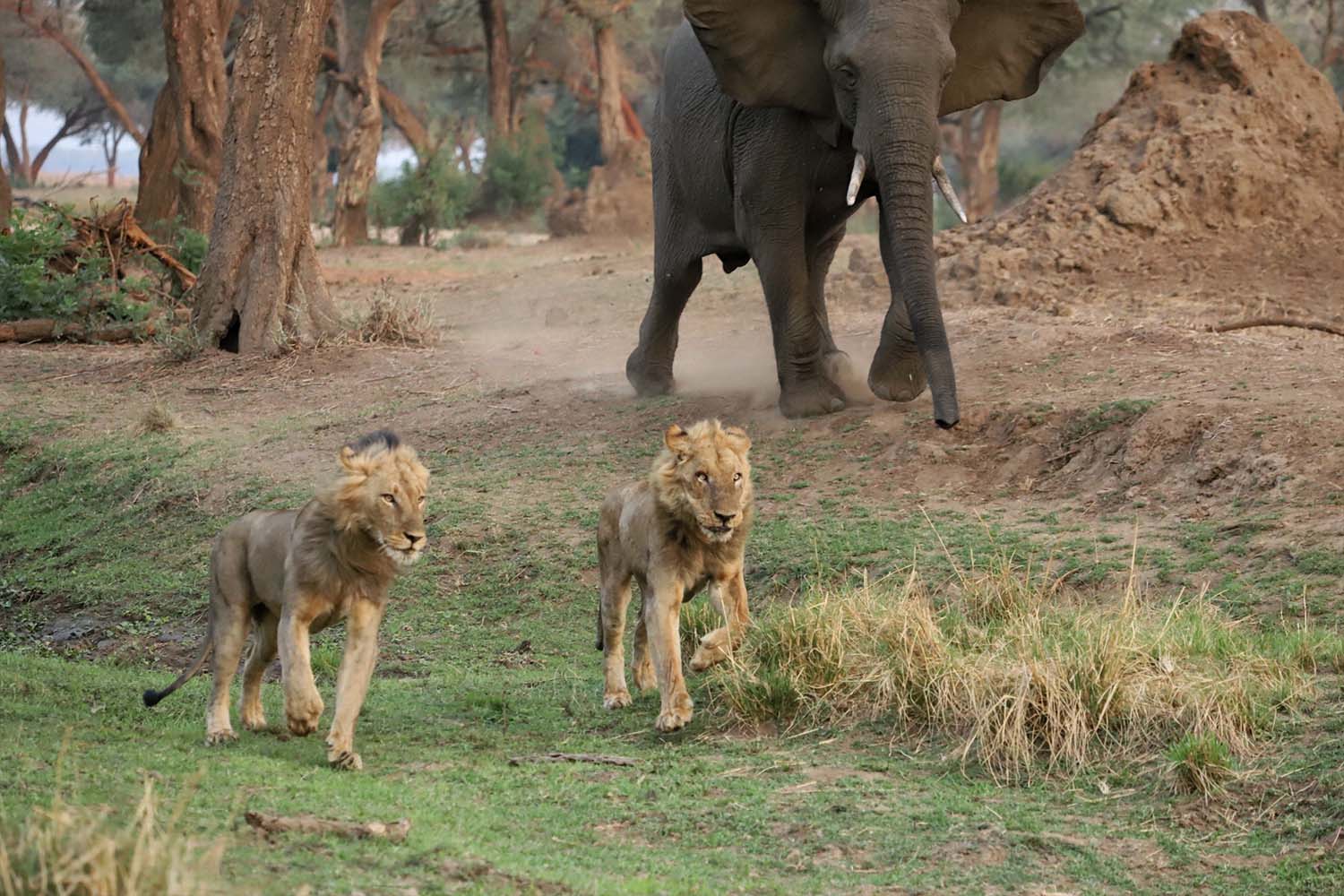
Now repositioned, we had a great view as the elephant decided he had enough of those lions brazenly hanging out in his domain, trumpeting and charging the group, a tusked freight truck roaring ahead at full speed. Would there be a scrap? Not quite. Four terrified “kings of the jungle” scampered away in great haste, tails between their legs and fright filling their eyes, looking back to see if they were safe.
Sam laughed with glee. Later, he explained that he was taught to anticipate action and put himself in an appropriate place, not only for what’s happening but for what might yet come. “The most important thing I learned, that I still use to this day, was when I was told ‘Sam, you live here, you know how the animals behave,’” he says. He allowed the development to happen and then put us in prime position to see it.
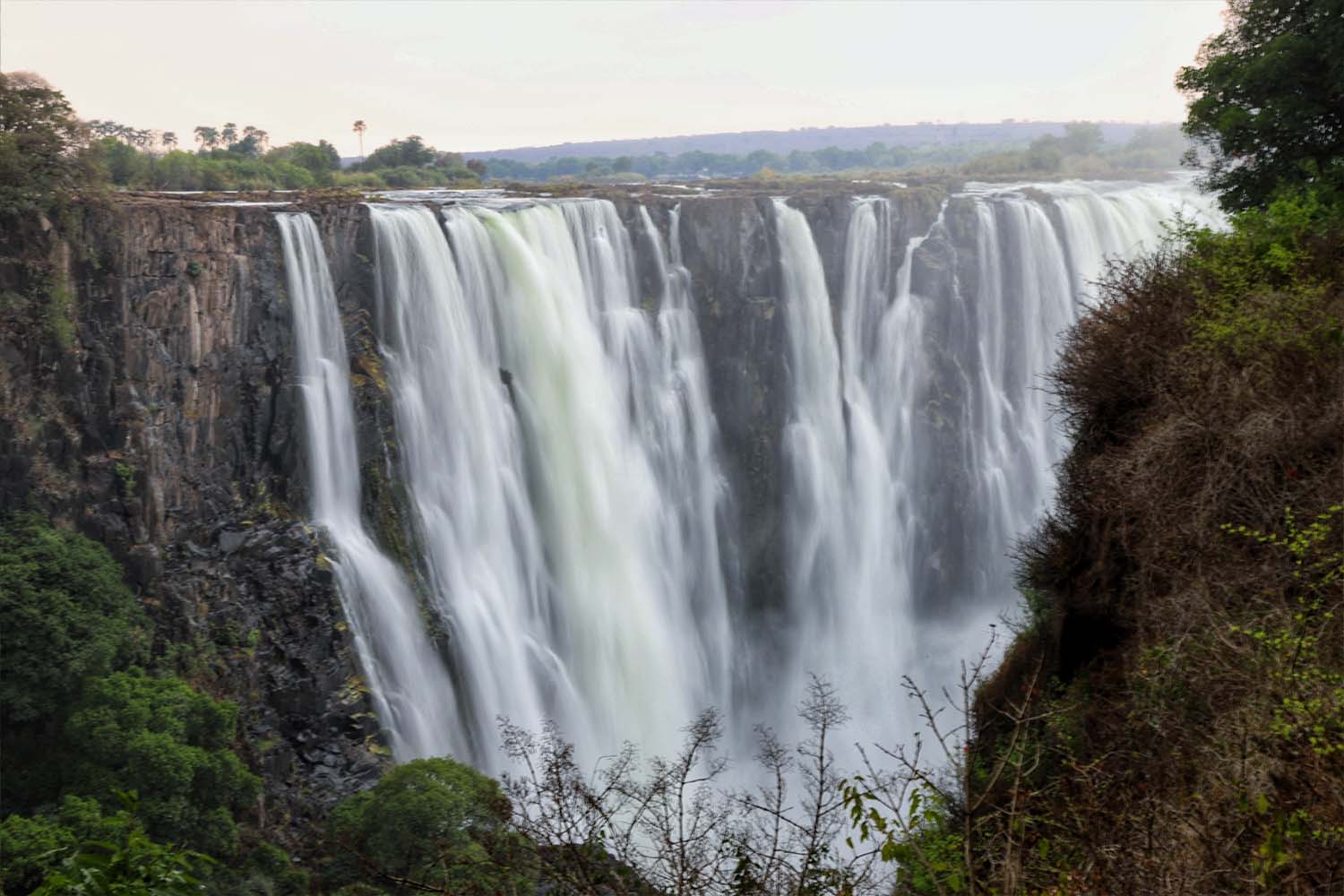
The Zambezi Feeds One of the Wonders of the World
After an action-packed stay in the Lower Zambezi, it was time to follow the river to its fiercest point, Victoria Falls. It may not be the highest waterfall or have the most gushing flow, but if you combine the factors of height, width and flow, it’s considered the world’s largest. The Mighty Zambezi powers it, and powers is an appropriate word.
There are myriad excursions to pursue in and around the falls depending on your tolerance for thrills, as well as the season and conditions. Take an observational walk, getting soaked along the way; hop on a zipline over or bungee jump into its gorges; or go for a dip right at its edge in Devil’s Pool. But the best way to appreciate its splendor is to get a bird’s eye view via helicopter ride. This allows you to see not only its vast expanse and its sheer strength but also appreciate the complete system of which it’s a part. There’s the mile-long face of the falls itself, sure, but then there’s the canyon system it has carved out over the eons, a series of jagged, 100-meter deep switchback gorges that the falls pour into as the Zambezi recollects itself and marches forward.
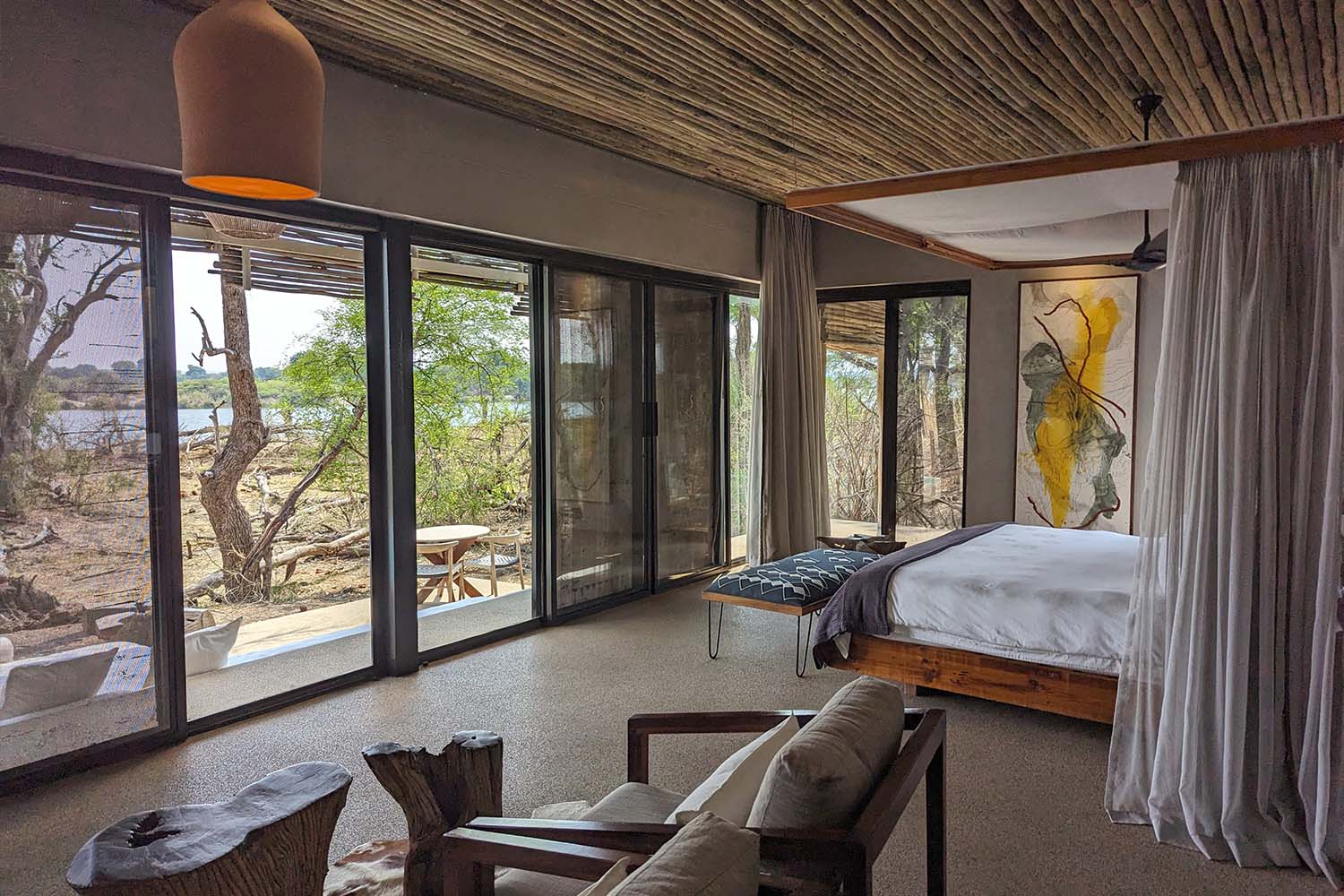
Plan to spend a few nights at Matetsi to make the most of your stop. The luxury, 19-villa lodge in Zimbabwe is located about 45 minutes away from the falls, making it easy to take one or several trips throughout a stay. Yet, by being located outside of the cities that line the falls on either side of the Zambia-Zimbabwe border, you also get to keep the safari lifestyle going.
Conservation is of the utmost importance to Matetsi, as it’s more than a swanky place to rest your head — it’s a gigantic private game reserve. Matetsi stewards 136,000 acres of territory, including nine miles of riverfront, home to all manners of wildlife. They employ a dedicated anti-poaching team and have constructed 16 solar-powered watering holes around the terrain, ensuring wildlife have ample water sources during dry season. They also support a number of nonprofit initiatives and work closely with neighboring communities.
Amid the Gorillas of the Albertine Rift
Our travel correspondent recounts his expedition through East Africa, which you can replicate, where he sought out our great ape cousinsMatetsi’s vast reserve serves as a playground for guests, though you might be tempted to stay put in your lavish, enclosed villa, equipped with a plunge pool, soaking tub and contemporary styling, with floor-to-ceiling sliding glass doors providing an expansive view of the Zambezi. Elsewhere, there’s a spa and gym, lap pool and a wine cellar, while game drives, boat cruises and elaborate breakfasts in the bush are among the activities.
While it may be hard to steal the limelight from Victoria Falls, Matesti does its best to do just that. It’s a top destination for those who want to see the falls and benefit from a fuller experience and showcase of Zimbabwe’s wilderness at the same time.
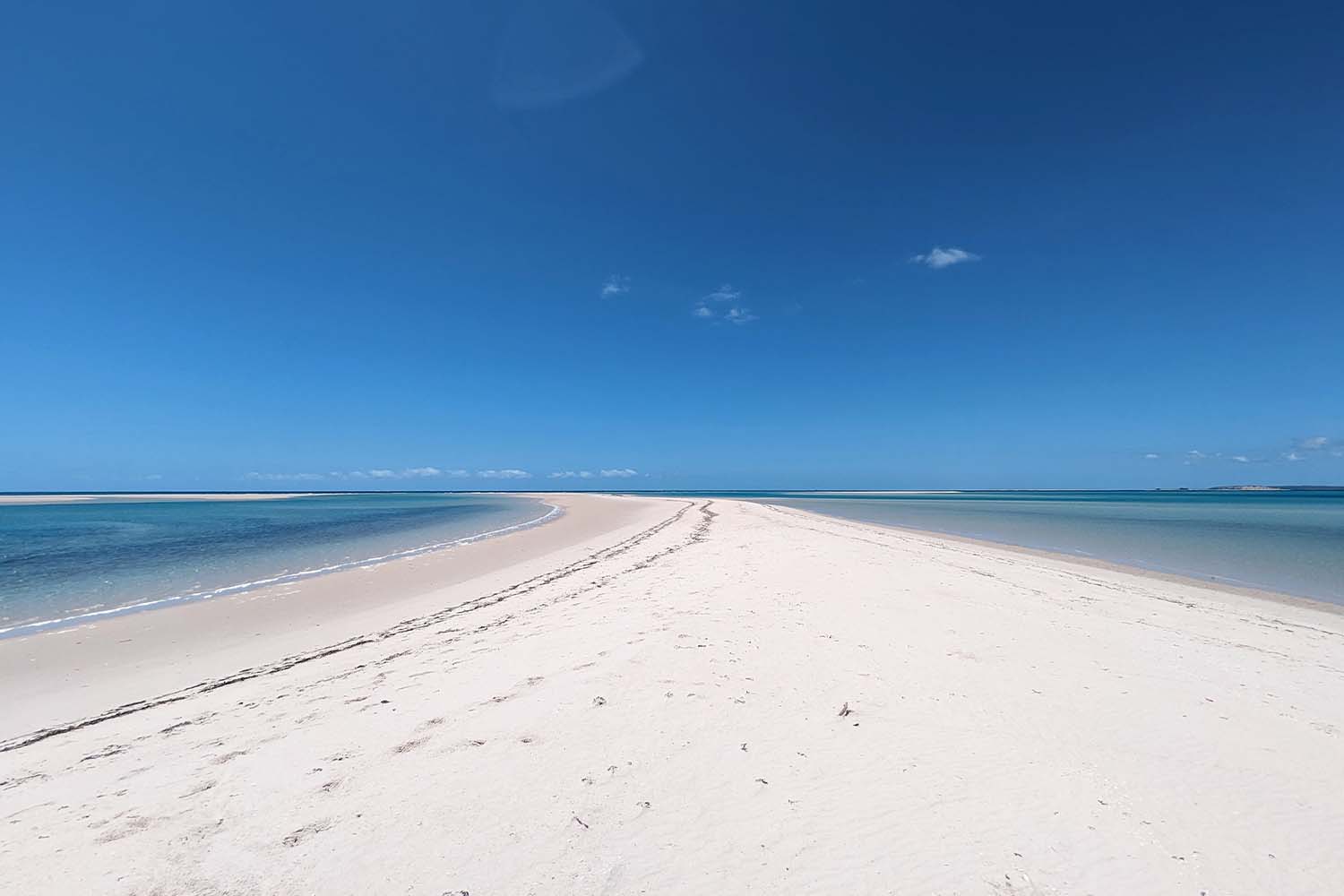
Mozambique’s Beaches May Be the World’s Best Kept Secret
The Zambezi doesn’t vanish into oblivion after Victoria Falls, of course. The 1,599-mile river has a solid stretch of road ahead of it before reaching the Indian Ocean, its mouth found about halfway up Mozambique’s lengthy coastline. We’re following the river’s path, but as some travelers may want an East African safari to Kenya or Tanzania with a visit to a sun-soaked beach like Zanzibar, when in southern Africa, you can do the same in Mozambique.
Mozambique’s coast may be one of the world’s best kept secrets, and when flying into Vilanculos (or Vilankulo) and getting your first glimpse from the air, its beauty stuns you with immediacy. Its powdery white sands and turquoise waters are on par with anything found in the Maldives or Turks & Caicos.
I’ll concede the Zambezi delta is quite far north of Vilanculos, but it served as a capable stand-in nevertheless. The river got us to the coast, but the reason we’re here specifically is the Bazaruto archipelago found mere miles off this stretch of Mozambique’s coast.
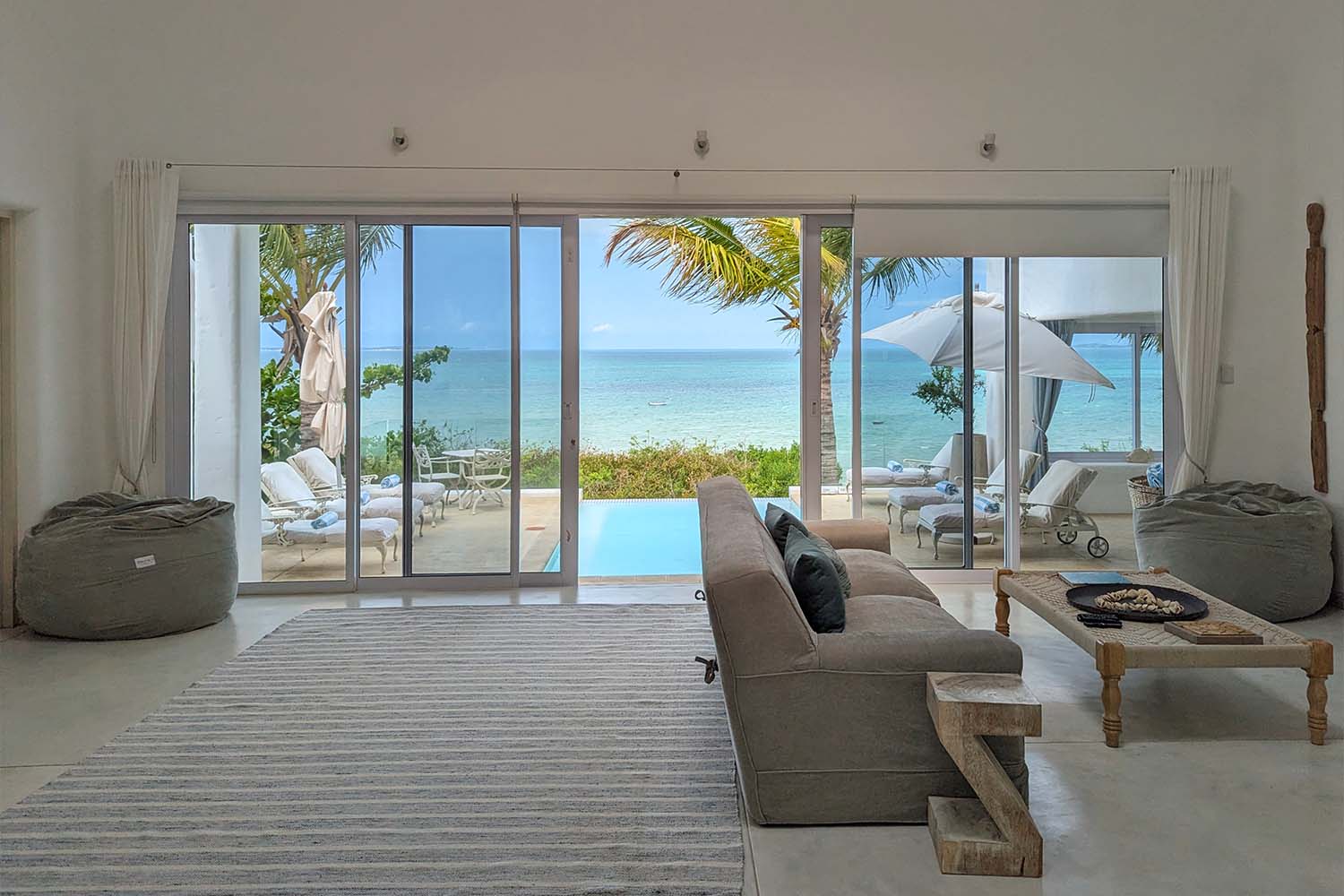
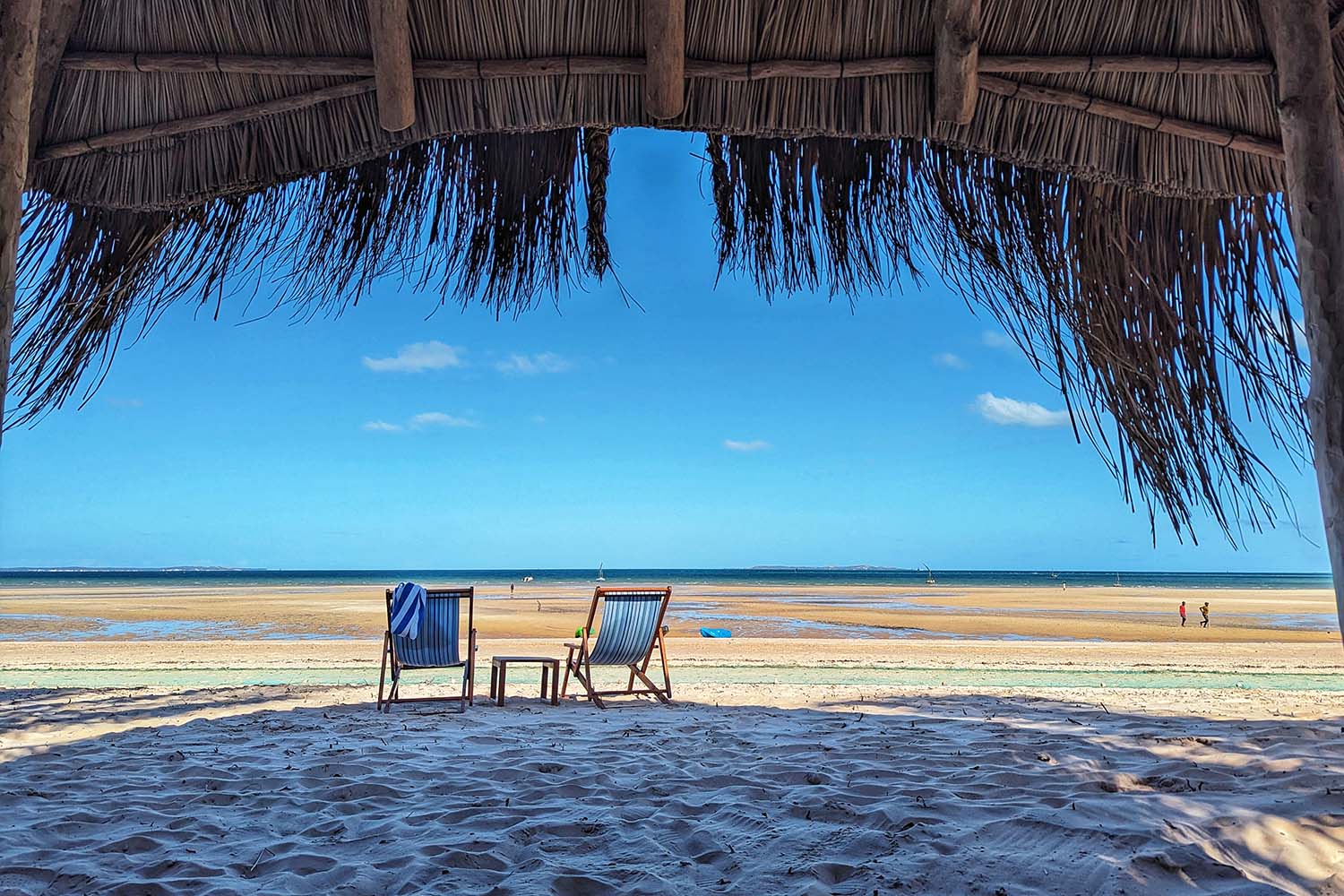
Plan a stay at the beachfront Santorini Mozambique, an estate-like getaway whose whitewashed walls and blue accents and décor are evocative of its namesake and also a fitting match of its environs. Santorini has five suites spread across its main villa, where there’s a pool, bar and numerous little hideaways to lounge and soak up the vibes. There are also three private villas, one of which, Villa da Praia, is expanding from three to four bedrooms next year. Across the grounds is a lush garden and a spa and a that takes guests straight down to the shore, toes in the sand in a matter of steps.
A visit to Santorini is focused on getting out onto the water, and an outing to Magaruque Island in the Bazaruto archipelago painted a pristine portrait of what the region has to offer. An excursion might include a private picnic lunch after a snorkeling session, where dolphins and turtles may make an appearance, and a cruise around the islands, where a flamboyance of flamingos numbering in the hundreds may be found.
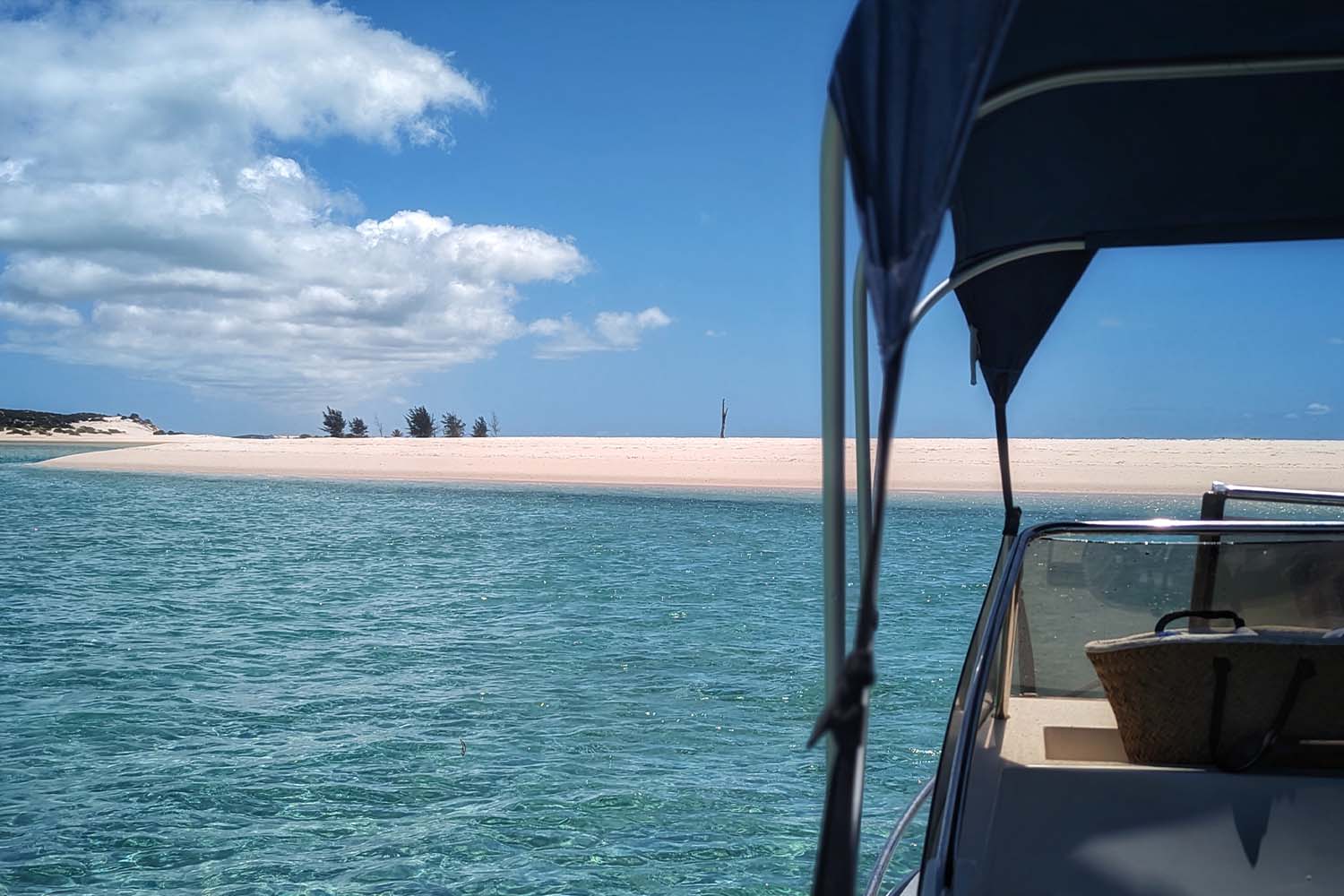
Along the way, step off at Pansy Island, a fantasy-scape of pastels come to life, which in truth is more sandbar than island. The colors veer toward the absurd: white sands amid brilliant blue waters, the bright pink and coral of those flamingos. It’s serene, unbothered nature, and you realize you’re the tiniest speck in the vast Indian Ocean but that you’ve arrived at perhaps its most perfect point. Who’s to argue? There’s nobody else in sight, it’s a personal paradise, your chance to play castaway for a day.
It’s a world removed from Victoria Falls and the safari camps of Zambia, but all you have to do is retrace the river to piece it together. The powerful, life-giving force of the Mighty Zambezi and its meandering route across the continent connected the dots and set the stage for us, remember?
It’s clear that there’s much more to explore, that one visit won’t be enough to satiate the craving. “The pages are the same, but they get rubbed out and written with new stories every day,” Cumings says of the daily safari experience. Even when you know what to expect, you’ll still be surprised. Even if you’ve been there before, you’ll see something new and different and exciting. That’s the essence of a safari and the ideal that keeps travelers coming back time and time again.
